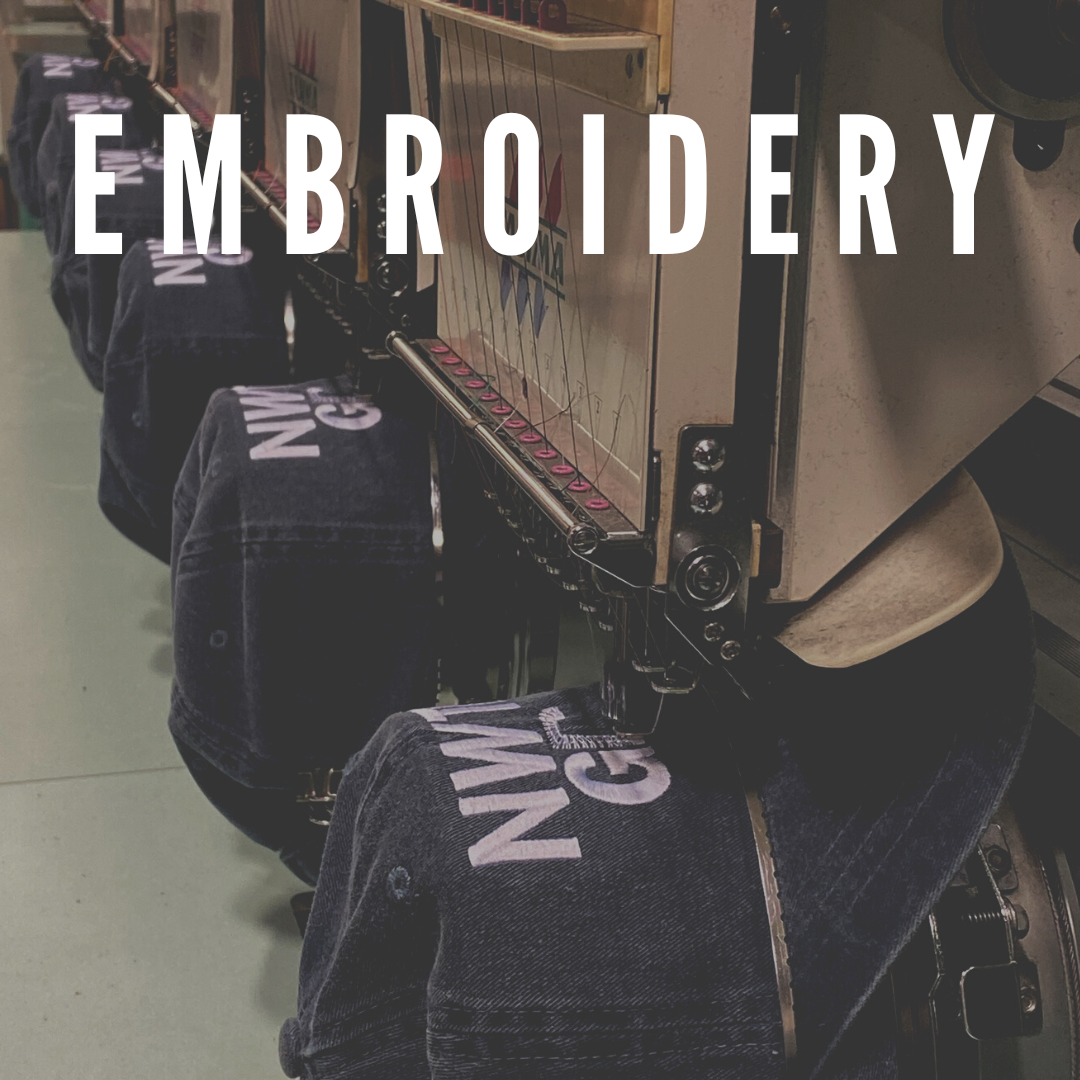
What does embroidery mean? If an accessory or piece of clothing is embroidered, this means patterns have been sewn onto it with thread.
There are 5 basic types of stitch patterns or styles used in creating embroidered designs.
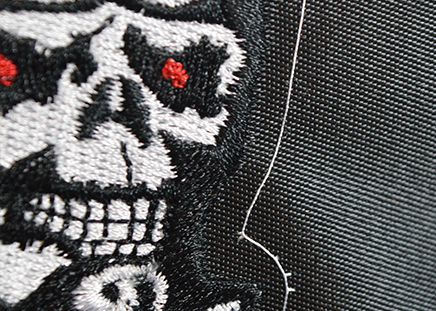
Fill Stitch
Small, dense stitch pattern used to fill in areas over .5" wide. A lot of stitches and can often be replaced with an applique.
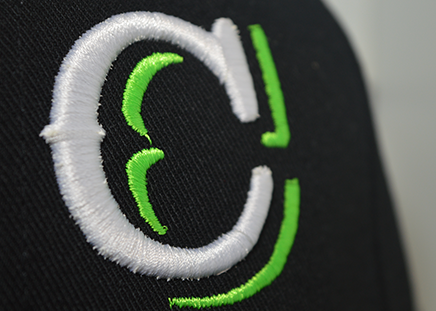
Satin Stitch
Smooth stitch that runs from edge to edge of a shape in one stitch. Most text looks best with this type of a stitch but it cannot exceed .5" wide.
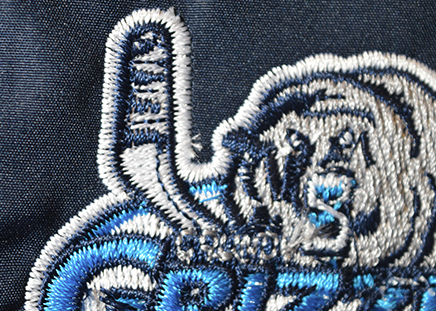
Run Stitch
For fine detail or very small text. Detail is not as sharp as printing since the stitch cannot be any thinner than the width of thread.
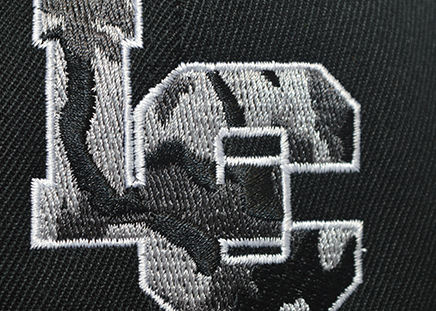
Steil
Very similar to satin, but always set to the same width. Often used in outlining shapes and letters or appliques.
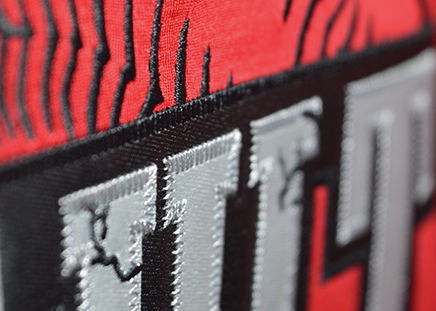
Applique
Used to enhance large fill stitch areas by using material instead of stitching the entire area. Often used on athletic uniforms such as baseball jerseys. The materials are sewn down with either a satin, steil, or zig-zag stitch. This can save on stitching costs but also provides a great look.
